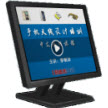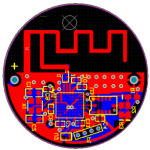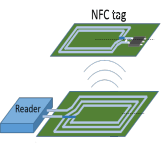天線特性跟雜訊溫度noise temperature的關係
05-08
想請教一下
1. 雜訊溫度的公式?
2. IF有公式能否把他代到 EM Tools (HFSS, CST ...... )裡做? 請問有人做過這件事嗎?還是這個是無法考慮進去的?
以下是我從 Google 中找到的文件:
RF電路設計講座(1)射頻、微波天線技術探微
http://web.pcbinfo.net/mycode/artishow.asp?artid=13&ID=111149
天線在無線電系統裏的功能是什麼呢?答案是,它是一個「門」、一個介面,透過它,射頻能量可以從發射機輻射到外面世界;或從外面世界到達接收機。底下將討論各種天線系統的技術。
天線特性
.........
接收系統的效益指數(G/T):G是天線的增益,T是雜訊溫度(noise temperature)。天線的接收靈敏度和G/T值大小有關,若G/T愈高,表示天線對微弱訊號愈敏感,接收效果也愈好。「雜訊溫度」是很抽象的觀念,它的定義應該用數學公式表示。但若要以純文本描述的話,可以這麼說:在一個通訊系統或被測元件裏,當頻率不變時,被動元件系統的溫度會使每單位帶寬的雜訊功率(noise power)ρ增加,當被動元件系統的ρ值等於此通訊系統的ρ值時,所得到的溫度就是「雜訊溫度」。請注意,被動元件是包含在此通訊系統或被測元件裏面,有時此被測元件也被稱作「網路的真正終端裝置(actual terminals of a network)」。例如:一個單純電阻的「雜訊溫度」就是此電阻的真正溫度;但是,一顆二極體的「雜訊溫度」可能是此二極體(真正的終端裝置)的真正溫度(接腳測量到的溫度)之數倍之多。雜訊溫度是以絕對溫度(-273oC)為零度,單位是K(Kelvin )。
Dish Noise Temperature
Satellite dishes not only detect the desired satellite broadcast but also noise from natural and man-made sources. Noise from the surrounding environment and electronic equipment works in the opposite direction to gain and must be avoided if at all possible. A portion of this noise enters via the dish side lobes; a smaller amount, predominantly that from outer space, enters via the main lobe. Dish noise temperature is a measure of how much noise is detected from the surrounding environment. The warm ground emits microwave radiation so noise temperature increases as a dish is pointed at increasingly lower elevation angles. Thus the reception from a satellite located closer to either horizon would be poorer than one from one located higher in the arc. Noise also decreases as dish size increases, since larger dishes have smaller side lobes and a more narrow main lobe.
1. 雜訊溫度的公式?
2. IF有公式能否把他代到 EM Tools (HFSS, CST ...... )裡做? 請問有人做過這件事嗎?還是這個是無法考慮進去的?
以下是我從 Google 中找到的文件:
RF電路設計講座(1)射頻、微波天線技術探微
http://web.pcbinfo.net/mycode/artishow.asp?artid=13&ID=111149
天線在無線電系統裏的功能是什麼呢?答案是,它是一個「門」、一個介面,透過它,射頻能量可以從發射機輻射到外面世界;或從外面世界到達接收機。底下將討論各種天線系統的技術。
天線特性
.........
接收系統的效益指數(G/T):G是天線的增益,T是雜訊溫度(noise temperature)。天線的接收靈敏度和G/T值大小有關,若G/T愈高,表示天線對微弱訊號愈敏感,接收效果也愈好。「雜訊溫度」是很抽象的觀念,它的定義應該用數學公式表示。但若要以純文本描述的話,可以這麼說:在一個通訊系統或被測元件裏,當頻率不變時,被動元件系統的溫度會使每單位帶寬的雜訊功率(noise power)ρ增加,當被動元件系統的ρ值等於此通訊系統的ρ值時,所得到的溫度就是「雜訊溫度」。請注意,被動元件是包含在此通訊系統或被測元件裏面,有時此被測元件也被稱作「網路的真正終端裝置(actual terminals of a network)」。例如:一個單純電阻的「雜訊溫度」就是此電阻的真正溫度;但是,一顆二極體的「雜訊溫度」可能是此二極體(真正的終端裝置)的真正溫度(接腳測量到的溫度)之數倍之多。雜訊溫度是以絕對溫度(-273oC)為零度,單位是K(Kelvin )。
Dish Noise Temperature
Satellite dishes not only detect the desired satellite broadcast but also noise from natural and man-made sources. Noise from the surrounding environment and electronic equipment works in the opposite direction to gain and must be avoided if at all possible. A portion of this noise enters via the dish side lobes; a smaller amount, predominantly that from outer space, enters via the main lobe. Dish noise temperature is a measure of how much noise is detected from the surrounding environment. The warm ground emits microwave radiation so noise temperature increases as a dish is pointed at increasingly lower elevation angles. Thus the reception from a satellite located closer to either horizon would be poorer than one from one located higher in the arc. Noise also decreases as dish size increases, since larger dishes have smaller side lobes and a more narrow main lobe.
辐射边界条件等效于微波暗室的环境,理想的情况是不会受外界干扰的,我觉得要模拟这种效果关键就要看边界能否设置成有噪声的效果了。
天线的特性与噪声温度有啥关系吗?它们应该是独立的把,倒是天线自身也有温度。
小编引用的的文件貌似看不太懂哈,希望高手多多讨论
杂讯温度是描述电子器件一个基本慨念。因为热噪声是无所不在,在电子器件几乎是无法除掉的,因此许多其他类型的噪声也被统一描述成为“等效”热噪声,这样就有一个“等效”杂讯(噪声)温度(noise temperature)。
任何噪声功率P和它的“等效”杂讯(噪声)温度T的关系是:
P = k T B
这里,
k = Boltzmann Constant ( Joules/°Kelvin)
T = noise temperature (°K)
B = noise bandwidth (Hz)
据我所知,EM Tools (HFSS, CST ...... )是不包含处理噪声贡献的功能。
感謝樓上的兩位的回答...
我現在的想法是工具是無法直接假設的這是一定的,我之所以想知道數學式是我想知道之間的關係,然後用 CALL C or Matlab 等的方式,把條件加到 EM Tools (HFSS, CST, FEKO..etc.... )裡做。
IF 以純粹Dish所提供之Noise Temperature 一般會隨著仰角(Elevation)變化。這個簡單的原理,來看,我目前也想不透要如何 CALL 數學式。
還請有經驗的人多多的回答。
天线设计培训教程推荐








